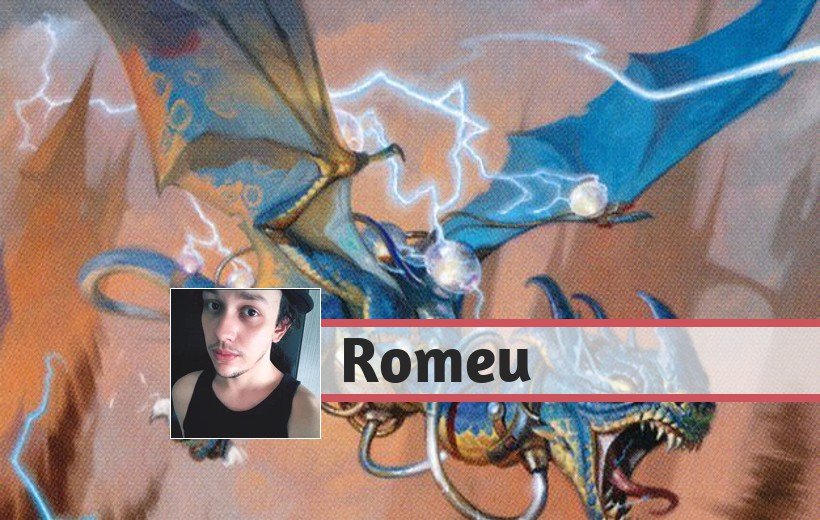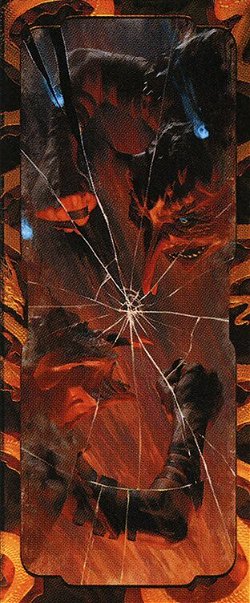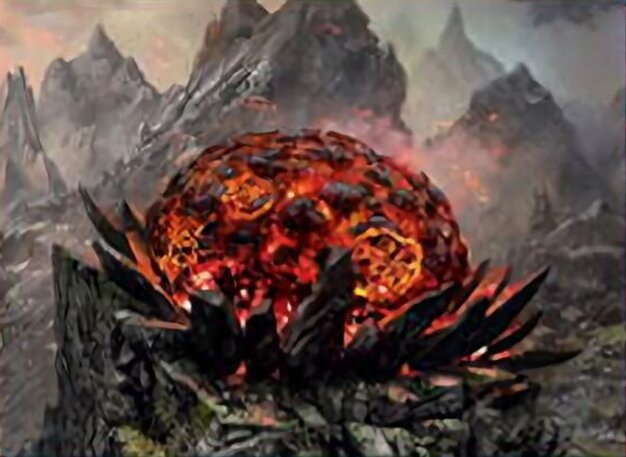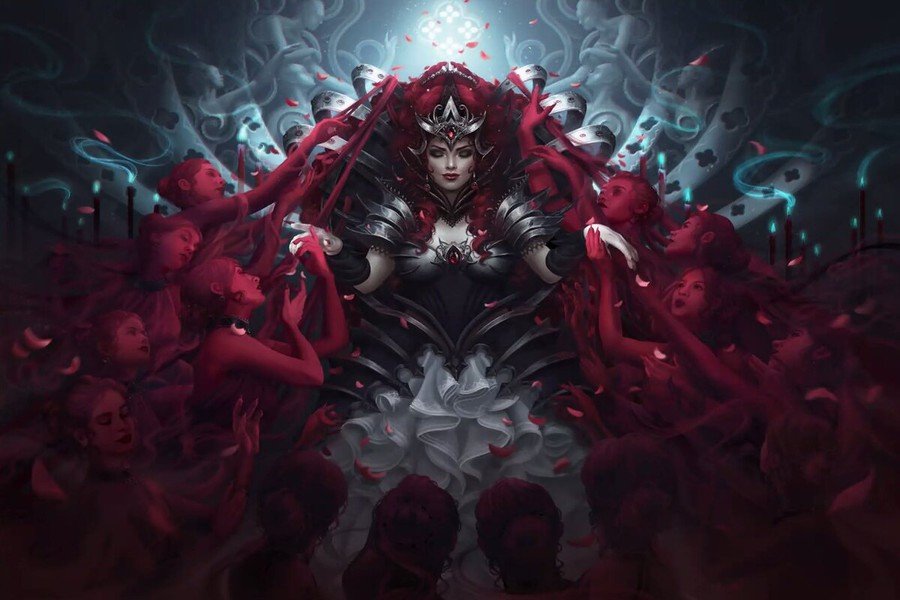It's been a long time since I last did a Deck Tech, essentially because, in general, competitive formats are constantly changing and just analyzing a deck is a bit out of what I'm trying to bring to readers these days when I want to comment on an archetype or a competitive format.
However, with StarCityGames' SCGCon taking place this past weekend, and having among its side events a Mythic Championship Qualifier in the Pioneer format, I couldn't help but see the Top 8 decks, which very much represents how the format has been featured in a general Metagame:
Ad
3 Izzet Phoenix
1 Izzet Drake
1 Rakdos Arcanist
1 Boros Burn
1 Bant Spirits
1 Azorius Ensoul
And although we don't have the event's entire Metagame, nor the other lists (which, in my opinion, is a tremendous failure on the part of the staff to not even stream its main event), the list used by the winner, Daniel Schriever, was an Izzet Drake, which caught my attention enough to want to dissect the list a little and elaborate what are its advantages over the current Metagame and, mainly, the most played deck in the format today, Izzet Phoenix.
So today I'll be featuring an Izzet Drake Deck Tech, used by the player Daniel Schriever to win the SCGCon Mythic Championship Qualifier!
Understanding the Izzet Drake
I believe we can name Izzet Drake as a Midrange deck, since, despite being a proactive list with few counterspells (and its only maindeck counterspell is conditional), it is much more grind-oriented, relying much more on answers for the most diverse occasions, while its abundant number of cantrips allows it to find the necessary cards at the right time.
Your goal here is to trade your resources against your opponent's cards, in addition to using cards like Expressive Iteration and Treasure Cruise to replenish your resources, while your creatures allows you to close the game quickly, as they will commonly offer a three-turn or fewer clock.
In many ways, this list reminds me of Standard's Izzet Dragons, played by Yuta Takahashi to win this year's World Championship, where efficient answers combined with a fast clock allow for a fluid victory and, forcing the opponent to be cautious on how to play their removals and when to overextend because your creatures can easily turn the tables, while your good decisions and understanding the timing of each play are highly rewarded.
Like Izzet Phoenix, the deck features a mighty cantrip package that allow the archetype to speed up the number of spells cast to activate Thing in the Ice or boost the power of Crackling Drake, or increase the number of cards in the graveyard to cast Treasure Cruise, making each card extremely interactive with each other and with multiple ways to extract value from them.
Without further ado, let's understand the function of each of the cards included in the list:
Maindeck

Starting with our threats, we have a complete set of Thing in the Ice, a creature that blocks aggressive decks very well in Early-Game, and can, with just a few spells, turn the game in your favor while becoming a 7/8 threat, setting a gigantic clock for the opponent.
An important point of Thing in the Ice's ability is that you can manipulate the sequencing of your spells to activate it at opportune times and even protect it from certain removals, either leaving it to cast the fourth spell at the end of your opponent's turn, or in response to a Lava Coil or other effect that would commonly kill it, and understanding when to use its ability aggressively or wait for the most opportune moment takes some patience to learn.
Ad
Our other threat is Crackling Drake, a creature that grows exponentially on this list as the game goes on, usually with the first one entering the battlefield as a 7/4, while the second already has a significant power boost, commonly around 11/4 or higher, thus being a creature that can end the game in one or two attacks.
In addition, Crackling Drake replenishes in your hand when it comes into play, making any exchange your opponent makes with it virtually disadvantageous, as they will be spending a card to deal with your creature while it has already given you at least one draw before being removed.
Finally, we have Brazen Borrower as a card that works both as a way to interact with certain opponent's permanents, and as another evasive threat that, if well protected or in the absence of blockers, can establish the necessary pressure against the opponent for you to win the game.
Brazen Borrower is our main and only maindeck way of dealing with enchantments and Planeswalkers that have already been resolved, so it should be used wisely.

To interact with the opponent, we have a removals package that seem to have been specifically selected to handle the current Metagame.
Magma Spray is a great card to deal with Arclight Phoenix, while also very useful in dealing with mana dorks, Young Pyromancer, Burn's low-cost creatures, and other threats, and it also has a peculiar utility where you can use it on a Kroxa, Titan of Death's Hunger cast from the opponent's hand to force him to be exiled with his own trigger.
Fiery Impulse works the same way, but can, in a few turns, also deal with creatures that Magma Spray cannot reach, such as Bonecrusher Giant, Dreadhorde Arcanist, Spell Queller, Supreme Phantom, and Archon of Emeria.
Lava Coil is great at dealing with Thing in the Ice and Winota, Joiner of Forces, while also working with all the cards that the other options resolve.
Finally, Anger of the Gods is the best red sweeper present in the format today, as it can exile multiple copies of Arclight Phoenix while retaining its usefulness in dealing with archetypes that seek to populate the board with creatures, something recurrent among the aggressive decks.

As we look to make fair trades with the opponent using our removals, we need ways to replenish the resources in our hand as we need to continue to establish control or speed up our game plan.
Expressive Iteration is one of the most powerful cards released in Magic: The Gathering recently, serving to commonly guarantee your early-game land drop, while also granting two spells to cast on Late-Game, and removing a useless card from the top of your deck, essentially being a “draw 2” for two mana.
Treasure Cruise has been leading a lot of controversy recently in the Pioneer community, for rewarding certain archetypes for doing what they naturally do, becoming a kind of Ancestral Recall according to how the game continues.
Ad
The list also features Search for Azcanta, a card that seems counterintuitive to Treasure Cruise, and that the deck's pilot, Daniel Schriever, admitted to have used it merely because the vendors ran out of Considers to sell.
However, I am interested to know how much Search for Azcanta has been helpful in matches, and how often its activations have somehow been relevant in games, as my experience with the card was not significant enough to consider keeping it on the list.

We also havve a powerful cantrip and card selection package.
Opt is widely known in the format as the best cantrip we had access to until the release of Consider, allowing you to minimally filter the top and draw a card.
Consider interacts better with the deck and is a far superior cantrip than Opt merely by permanently dealing with an unwanted card, putting it into the Graveyard, where it can be reused to feed Treasure Cruise.
Speaking of Treasure Cruise, a card that also serves the purpose of speeding up Treasure Cruise and boosting the power of Crackling Drake, while counting as two casts for Thing in the Ice, all this while filtering your next draws at Instant-Speed is Otherworldly Gaze, which honestly impressed me a lot during my playtests.

Finally, we have Spell Pierce as a low-cost interaction that can serve to protect your creatures, or to respond to a Planeswalker, or any other necessary purpose, but which loses its usefulness as the game goes longer.
And Kazuul's Fury, which Daniel mentions being on the list in place of one of the copies of Consider, but which can serve as a land drop and a sort of 2-card combo with Crackling Drake, where you can sacrifice it on Late-Game to deal lethal damage to your opponent.

The manabase follows the patterns we see in the most diverse Izzet lists, with the only notable difference being the inclusion of a third Fabled Passage in place of a Riveglide Pathway, which can be a way to get more cards in the graveyard, or being able to reshuffle the deck if necessary.
Otherwise, we have Spirebluff Canal as our preferred Early-Game land drop, Stem Vents as Shockland in Izzet colors, which interacts very well with Sulfur Falls and Riverglide Pathway as a land that can be used to add the necessary mana when you play it, or it should also be used to plan later plays, always considering the need for colors that the list has.
Sideboard

On the Sideboard, we have some punctual responses to threats that are already in play, like Aether Gust to deal with multiple creatures in different decks, like Kroxa, Titan of Death's Hunger and Dreadhorde Arcanist in Rakdos Pyromancer, various Boros Burn creatures, virtually all Gruul Aggro creatures, and also resolve occasional uncountable cards.
Ad
Fry mainly helps to deal with Teferi, Hero of Dominaria, but also has great utility in dealing with all Spirits creatures, Thing in the Ice, Winota, Joiner of Forces, Omnath, Locus of Creation, and Lurrus of the Dream-Den.
Last, but not least, the additional copy of Magma Spray is very useful against Izzet Phoenix, but it also works against Rakdos Pyromancer, Boros Burn, and other lists with small creatures.

We also have an additional counterspell package for various situations.
Invasive Surgery is great to use against Izzet Phoenix's Treasure Cruise, or even to deal with one of the most recurrent answers to the archetype, Go Blank, while not losing its usefulness against a plethora of other spells.
Malevolent Hermit has proven its worth in Standard and Pioneer, capable of being a body to attack, a counterspell, and a creature that doesn't allow some of your essential spells, like Treasure Cruise, to be countered by the opponent.
Mystical Dispute is a great card against blue decks, while also acting as a useful counterspell against occasional Midranges who try to play "on curve".

The sideboard also has some attrition elements.
Saheeli, Sublime Artificer has been gaining ground on the Izzet Phoenix sideboard recently, as a harder-to-interact version of Young Pyromancer, and is especially lethal on this list for its ability to transform one of her tokens into a Crackling Drake copy.
Narset, Parter of Veils is very useful in dealing with archetypes that wants to draw too many cards in a single turn, such as a mirror match, while also working against Control decks to establish Card Advantage.
Eternal Scourge, a card that has never received much attention outside its Food Chain combo in Legacy and Commander, has been used in multiple numbers on the sideboard of Izzet decks for its huge advantage of being castable from exile, where you can leave it or even move it there via Treasure Cruise, serving as a recurring threat against lists that don't set a clock, especially against Control decks.
Why play this Deck over Izzet Phoenix?
I've been playing Izzet Phoenix for the last month, and I've decided to play a few matches with this list, and I'm particularly fascinated.
But a question we always raise when we see an Izzet deck without Arclight Phoenix is "Why should I play with that instead of the best deck in the format right now?"

The main reason I found is that the Metagame is in a state where everyone is trying to beat Izzet Phoenix (just like this list, with three maindeck copies of Anger of the Gods, two copies of Lava Coil and two copies of Magma Spray), and this list has a significant advantage against opponents who use significantly good cards to deal with Arclight Phoenix because they are usually bad against Crackling Drake or Thing in the Ice, as these aren't much affected by graveyard disruption, while they're more susceptible to cards like Mystical Dispute or quality removals like Lava Coil.
Ad
And while this list is more susceptible to efficient removals, it manages to extend the game long enough to play around these cards masterfully, and any threat that remains on the battlefield will be a threat that the opponent must deal with, or will lose the game in a few turns.
Another advantage this list has is that you don't need to run enablers for your cards to be good.

It's not that Lightning Axe or Chart a Course are bad cards, but they primarily serve as a means to enable Arclight Phoenix in your graveyard, and can create some uncomfortable situations in the course of a match.
On the other hand, the exclusion of these cards opens up slots that can be very well-used to respond better to the Metagame, with more efficient cards and/or ways to get an even greater amount of grind and value with their resources. While Lightning Axe is great at dealing with creatures, Lava Coil is in a better position in the current Metagame, for example.
Finally, the third advantage I've seen in using this list is the malleability of your playing posture, where the deck manages to follow the “Control” role much more efficiently than Izzet Phoenix, merely because its cards allow less proactive plays and often more conservative in protecting your threats and/or ensuring you have more resources than your opponent.
Of course, this comes with a cost: being a lot less explosive, as you don't have those openings that include a Thing in the Ice transformed along with two Arclight Phoenix attacking for 13 on turn 3, but the security and versatility of the answers you gain following the Izzet Drake route seems to pay off in the current format landscape.
In summary, Izzet Drake can be a good way to adapt to a Metagame that is evidently looking to respond to and hold Arclight Phoenix decks, allowing it to play around the format's main answers, while also being able to play “on top” and with more efficient cards against the rest of the Metagame.
Playtests Analysis
As I mentioned earlier, this list reminds me in many ways of Standard's Izzet Dragons: You spend the first few turns answering your opponent's threats, or casting Thing in the Ice and setting up with Cantrips and Expressive Iteration and, when trades with the opponent have stabilized the game, Crackling Drake is often the threat that ends the game and/or requires the opponent to deal with it in a few turns, while you already got immediate value with it (which even makes it less counter-interactive with Thing in the Ice than Arclight Phoenix),
In addition, the deck also has an absurd ability to filter cards from the top or the hand, which essentially allows you to "choose" what to draw and when to draw, and among all that have this function, one impressed me significantly:

I didn't pay much attention to Otherworldly Gaze, essentially because it doesn't replace itself in your hand, but being an Instant and reusable from the graveyard, Otherworldly Gaze allows you to do multiple things with a single card:
Ad
It allows you to use it on your opponent's end step to plan your next draw according to your opponent's play.
Allows you to put more cards to the Graveyard to speed up Treasure Cruise or increase the power of Crackling Drake.
Allows you to cast two spells to increase Thing in the Ice triggers.
Allows you to remove unwanted cards, such as lands at Late-Game or Sweepers on an empty board, from the top of your deck, while guaranteeing your land drops at Early-Game.
It also allows you to “plan” your next six draws, which is a massively powerful level of top manipulation
So, despite not being widely played, Otherworldly Gaze really impressed me with its usefulness and versatility, and it's possible that other decks, like Izzet Phoenix itself, can make good use of this card in their respective lists.
The list's removals package has proven to be very efficient and very versatile in dealing with the most diverse threats, and I believe these cards can and should be changed as the Metagame changes, and the same can be said for the Sideboard.
However, one point that really didn't appeal to me is how this list is not a good aggressor against Control decks, and it doesn't have enough elements to make it a more efficient Control than Azorius or Dimir, which significantly increases the importance that the archetype has in protecting its threats, and perhaps the inclusion of some means of obtaining more value could help in this matter.
Possible Inclusions
In this section, I'll be mentioning cards that I didn't particularly feel were good enough or necessary for the list, and I'll mention some options that might be interesting to the archetype.

Starting with the cards Daniel used for not having additional copies of Consider, this deck doesn't need Search for Azcanta, especially with more copies of the Midnight Hunt's cantrip.
Basically, you already look at so many cards and already draw so much during the game that the activations of Azcanta, the Sunken Ruin become redundant, and most of the time I've made the effort to transform the card, it was more useful as an additional mana than as the card selection it provides.
On the other hand, I really liked the inclusion of Kazuul's Fury, merely for offering a “Splinter Twin” on Late-Game, commonly serving as a “Free-Win” button against unprepared, inattentive, or overconfident opponents, similar to how we do with Atog and Fling on Pauper.
Also, Kazuul's Fury, like the other Fling effects, excels at responding to an opponent's removal, and our creatures are big enough that the damage dealt by the card becomes relevant, or might even win games.

In particular, Spell Pierce felt pretty bad on this list because its game plan involves some game extension, and this card loses its usefulness according to the number of turns passed and land drops made.
Since even Izzet Phoenix's lists have been playing it, I would consider switching Spell Pierce to Negate, as a way to get a definitive and safer answer against the opponent's cards, even if in to the detriment of delaying your counterspell backup for Crackling Drake a turn, as the Drake itself gets better according to how the game stretches.
Ad
Another card that could fall into this category is Stubborn Denial, as both a transformed Thing in the Ice and Crackling Drake can easily turn the spell into a one-mana Negate, while it still retains its role as a Force Spike at early-game.

Another option I consider testing later is Dig Through Time because, although it costs one mana more than Treasure Cruise and draws one less card, it allows you a larger amount of Card Selection, and can be used at Instant-Speed, making it a much more viable option to hardcast or to respond to certain occasions, which makes me believe that its versatility can pay off if the format remains so focused on dealing with graveyards.

Another option that could be evaluated is to add more grind elements to the 75 to better handle Control decks.
I think Planeswalkers are a good fit, and Ral, Izzet Viceroy and Chandra, Torch of Defiance offer card advantage and removals that can come in handy against Midrange too, while Jace, Wielder of Mysteries offers card advantage, Self-Mill and a very affordable alternative wincondition to the deck's proposal.
On the other hand, another option would be to add creatures that prey on Control decks because they are hard to kill while setting card advantage and/or a clock, such as Niv-Mizzet, Parun, Nezahal, Primal Tide or more copies of Eternal Scourge.
Conclusion
That was my Deck Tech for Izzet Drake, played by Daniel Schriever to win the Mythic Championship Qualifier on October 29th, during the SCGCon.
Overall, the Metagame seems pretty well-placed for Arclight Phoenix decks to try variants without its main card, which currently has a huge target in its head, with the rest of the format. trying to combat what might be considered the current best deck.
However, with new additions coming out, and with changes occasionally occurring in the Metagame, it will be necessary to assess whether the archetype remains a better strategy than Izzet Phoenix should the Metagame target become another archetype, as there is one price to pay for not using one of the format's most powerful recurring threats.
Time will tell which is the best option for Izzet decks in Pioneer, but this list, with its impactful threats and its abundance of card selection, definitely has a lot of potential and manages to win several games with ease.
Thanks for reading!









— Comments0
Be the first to comment